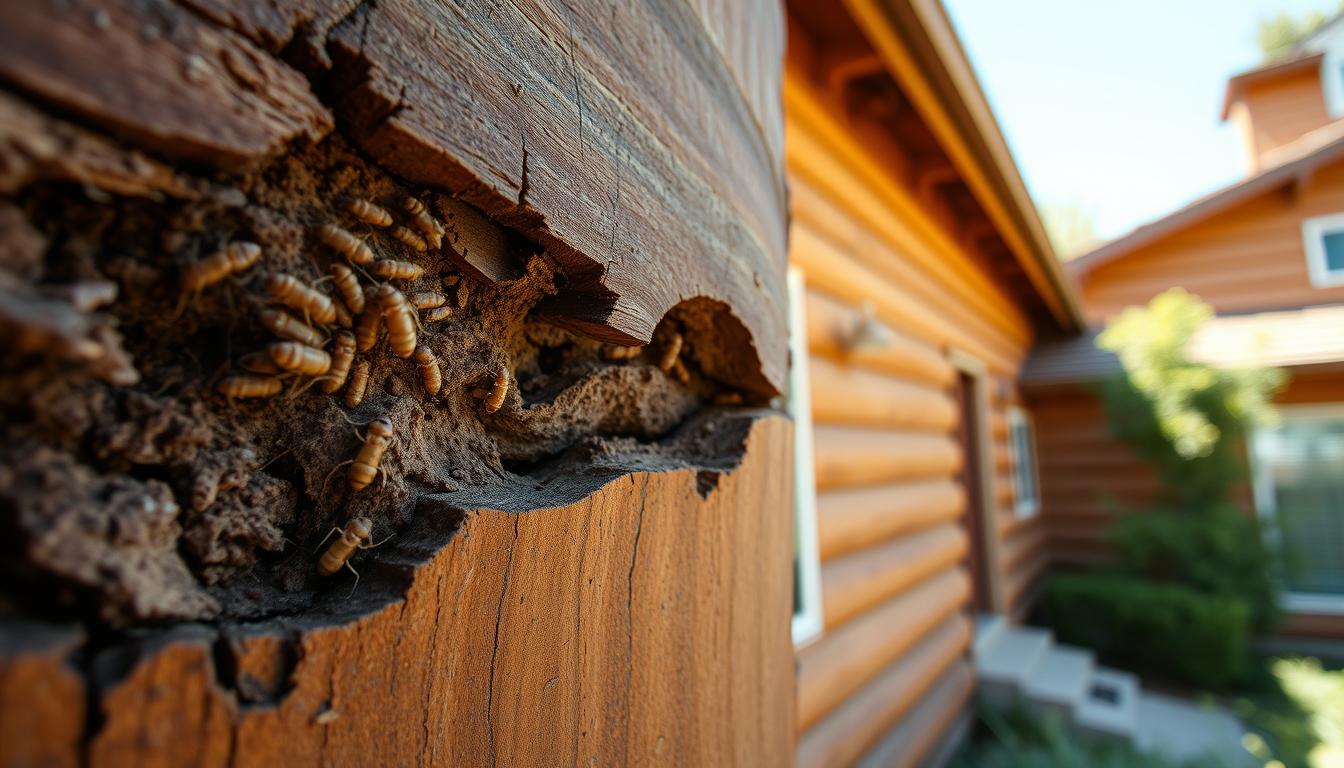Termites are a big problem in San Diego, causing a lot of damage to homes. Most homes in San Diego show signs of termite activity, except for condos and new homes. Termites are found all over the world, except Antarctica, with over 50 species in North America.
In San Diego, drywood termites are the main problem, while subterranean termites are rare. It’s important to check for termites regularly, especially when buying or selling a home. These checks cost about $100 and look for termites in every part of the house.
Finding termites early can save a lot of money and prevent big damage. This is why early detection is so important.
Key Takeaways
- Termites are a common problem in San Diego homes, with drywood termites being the most prevalent species.
- Regular termite inspections, costing around $100, are essential for early detection and prevention of costly damage.
- Termite infestations can lead to significant structural damage, financial implications, and health risks.
- Proactive measures, such as moisture control and removing wood-to-soil contact, can help prevent termite infestations.
- Seeking help from qualified pest control professionals is crucial for effective treatment and long-term prevention.
Understanding Termite Species in San Diego
Homeowners in San Diego need to know about the different termites that can harm their homes. The main types are drywood termites and subterranean termites.
Drywood vs. Subterranean Termites
Drywood termites are more common in San Diego. They like to infest wood that’s exposed, like eaves and door frames. Subterranean termites, however, start their colonies underground. They use mud tubes to reach wood.
Common Areas of Infestation
Drywood termites live in small groups in the wood they infest. They don’t need much moisture. Subterranean termites can grow huge colonies, up to 300,000 workers in 3-4 years. The Formosan subterranean termite, found near San Diego, can have colonies with up to eight million termites.
Peak Swarming Seasons
In San Diego, termites swarm most in August, September, and October. This is when temperatures are between 80 and 90 degrees Fahrenheit. During this time, winged termite swarmers look for new places to start colonies, causing wood damage.
It’s important for homeowners to know about the termites in San Diego. This knowledge helps prevent and deal with infestations. Working with professional termite control services can protect homes from the damage termites can cause.
Signs of Termite Infestation: What to Look For
Spotting the signs of a termite infestation is key to keeping your home safe in San Diego. Look for tiny holes in drywall and tunnels in furniture or walls. Also, watch for areas that seem to have water damage, caused by termites’ moisture.
Swollen ceilings, buckling floorboards, and piles of sawdust-like termite droppings near windows and sliding glass doors are clear signs. These are all warning signs.
Seeing termite wings or swarms around your house is another sign. Also, look for surface blisters on wood and mud tubes along the foundation or in the garage. These are signs of an active infestation.
Termite damage often takes years to show up, taking five to seven years for a colony to grow big enough to cause damage. So, it’s vital to have a pro check your home regularly. This way, you can catch termite nests early and avoid big damage.
FAQ
How common are termite infestations in San Diego homes?
What types of termites are found in San Diego?
When do termites swarm in San Diego?
What are the key signs of termite infestation in San Diego homes?
How long does it take for termite damage to become noticeable?
When should a termite inspection be conducted?
Source Links
- https://marclyman.com/san-diego-termites/
- https://www.lloydpest.com/blog/termite-season-termite-warning-signs-and-termite-prevention/
- https://blog.steelesandiegohomes.com/termites-in-my-san-diego-home
- https://www.sandiegocounty.gov/content/dam/sdc/common_components/images/awm/Docs/ipm_termites.pdf
- https://www.corkyspest.com/pest-id/termites/
- https://www.greenflashpest.com/blog/2022/december/san-diegos-guide-to-all-things-termite-control/
- http://extension.msstate.edu/content/signs-termite-infestation
- https://www.orkin.com/pests/termites/how-to-identify-termite-activity

Leave a Reply